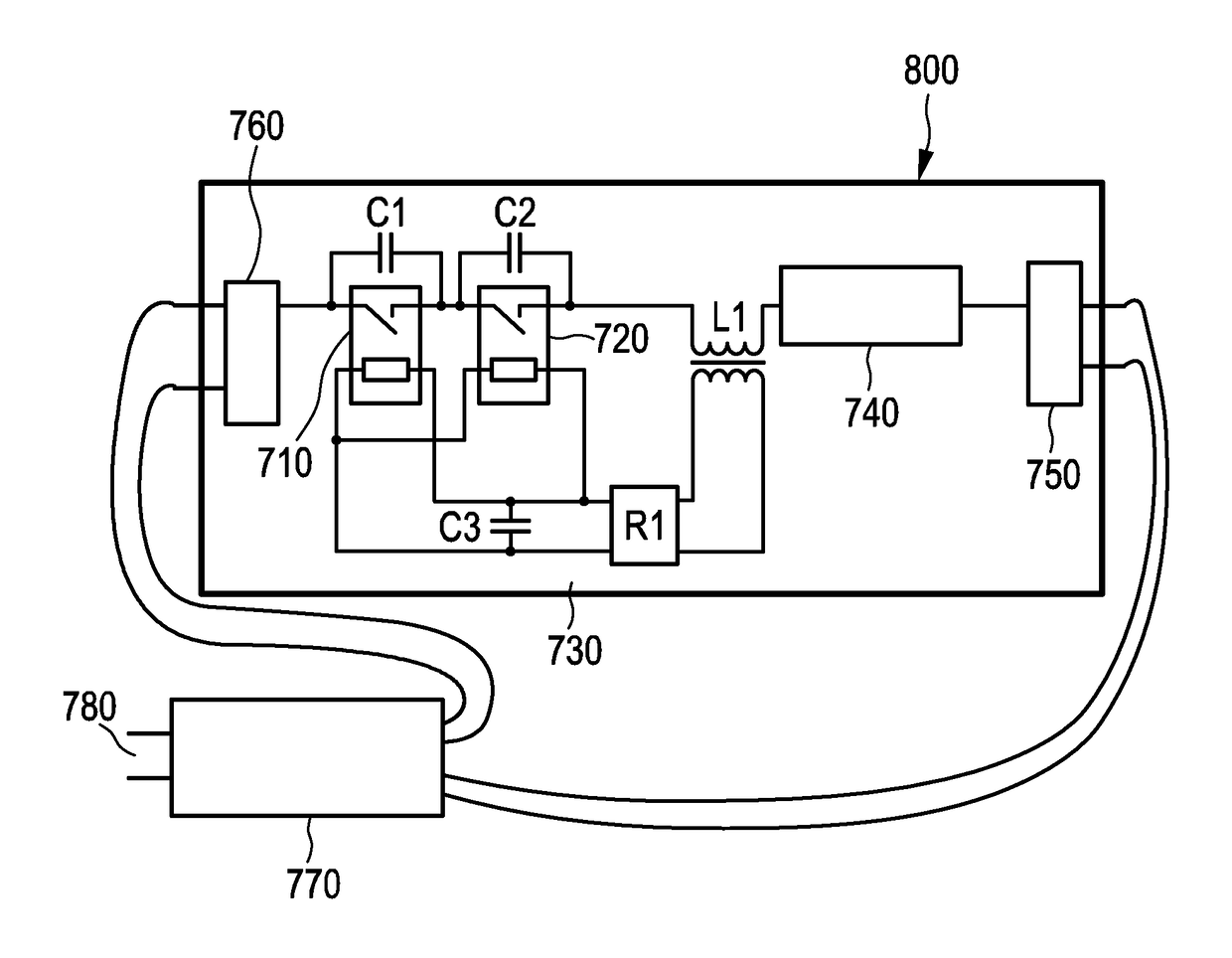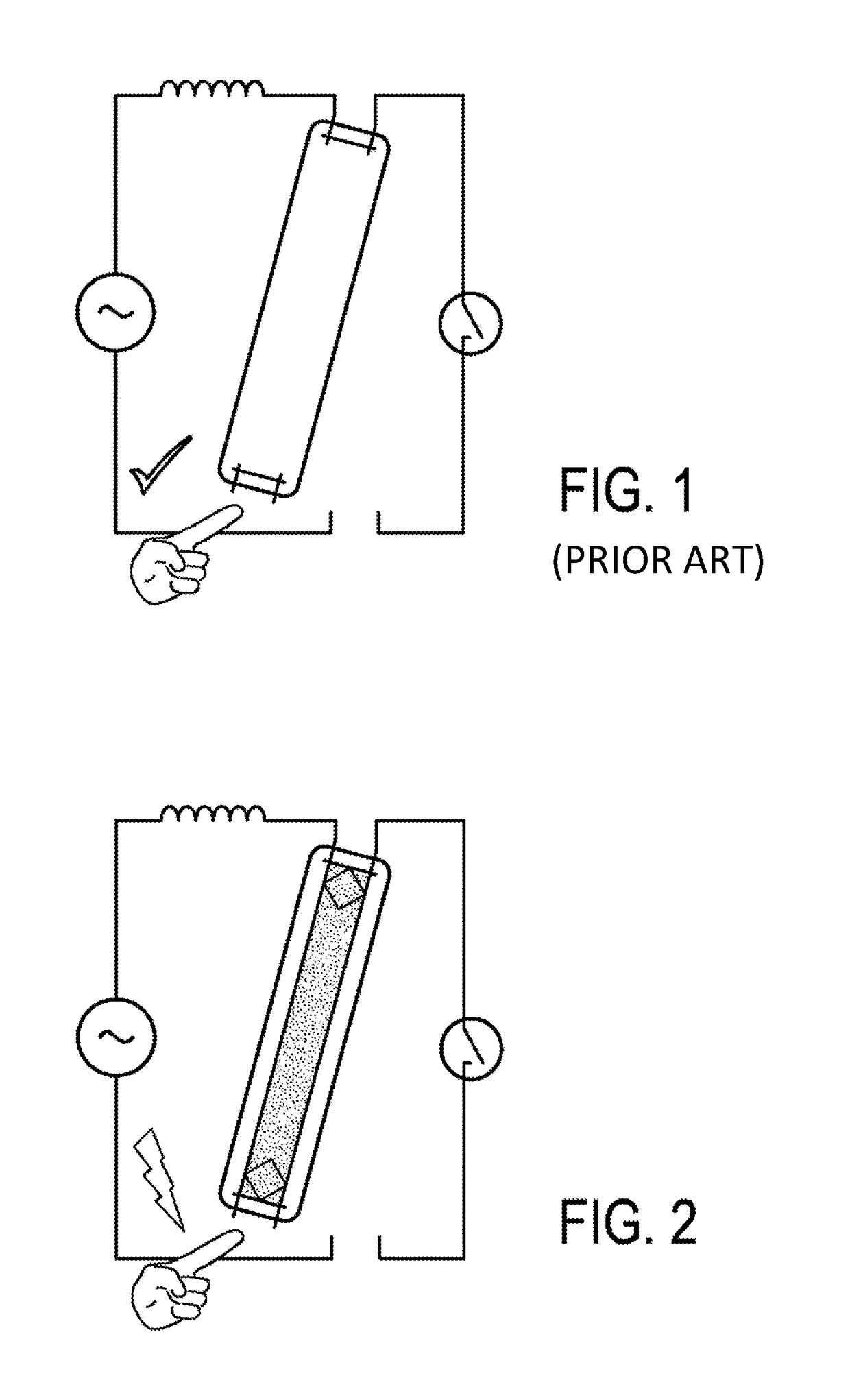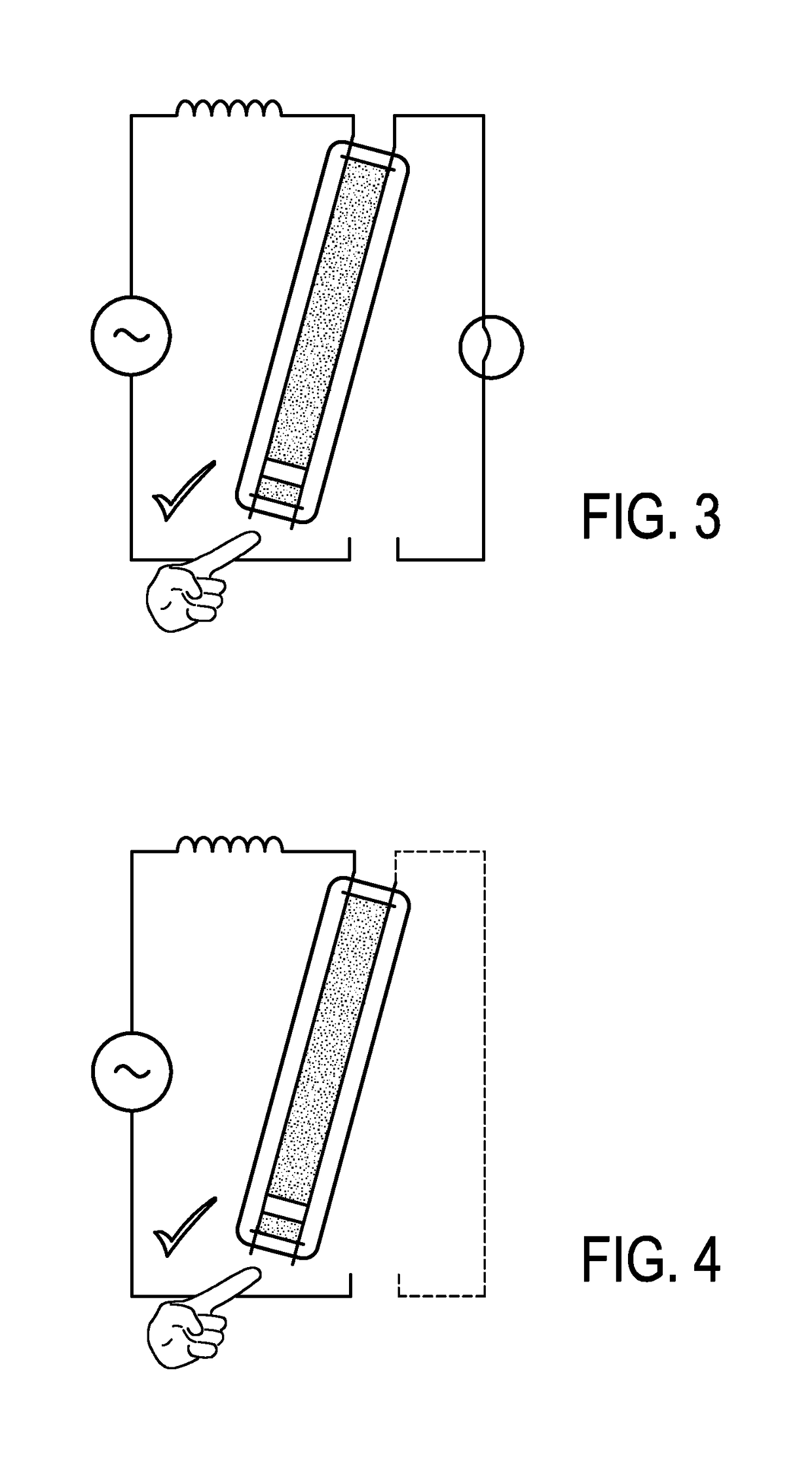LED retrofit lamp
a technology for retrofitting lamps and led lamps, which is applied in the direction of lighting safety devices, semiconductor devices for light sources, lighting and heating apparatus, etc., can solve the problems of no hf signal, no regular or sufficient hf signal, and devices that remain non-conducting, and achieve the effect of less cos
- Summary
- Abstract
- Description
- Claims
- Application Information
AI Technical Summary
Benefits of technology
Problems solved by technology
Method used
Image
Examples
Embodiment Construction
[0060]FIG. 1 shows schematically and exemplarily an example of a conventional TL-tube. Conventional TL tube lamps are safe due to the fact that the gas inside the tube first has to be ignited before there is a conducting path between the two connections on the end of the tube. Ignition is carried out via a combination of starter and ballast or a HF generated high voltage. This safety is necessary when the tube is being installed into a fixture while the voltage is not disconnected from the mains. In the situation when the lamp is not inserted correctly (e.g., one side inserted and the other not yet), the one side of the lamp is connected to live mains and the electrical contacts of the other side are insulated from the live mains As illustrated by FIG. 1, the pins of a conventional TL-Tube are safe to touch.
[0061]However, upon using LED-based lamps, such as LED-based retrofit lamps, there is a conducting path between the electronics in the two ends of the tube. Thus, safety is not g...
PUM
 Login to View More
Login to View More Abstract
Description
Claims
Application Information
 Login to View More
Login to View More - R&D
- Intellectual Property
- Life Sciences
- Materials
- Tech Scout
- Unparalleled Data Quality
- Higher Quality Content
- 60% Fewer Hallucinations
Browse by: Latest US Patents, China's latest patents, Technical Efficacy Thesaurus, Application Domain, Technology Topic, Popular Technical Reports.
© 2025 PatSnap. All rights reserved.Legal|Privacy policy|Modern Slavery Act Transparency Statement|Sitemap|About US| Contact US: help@patsnap.com



